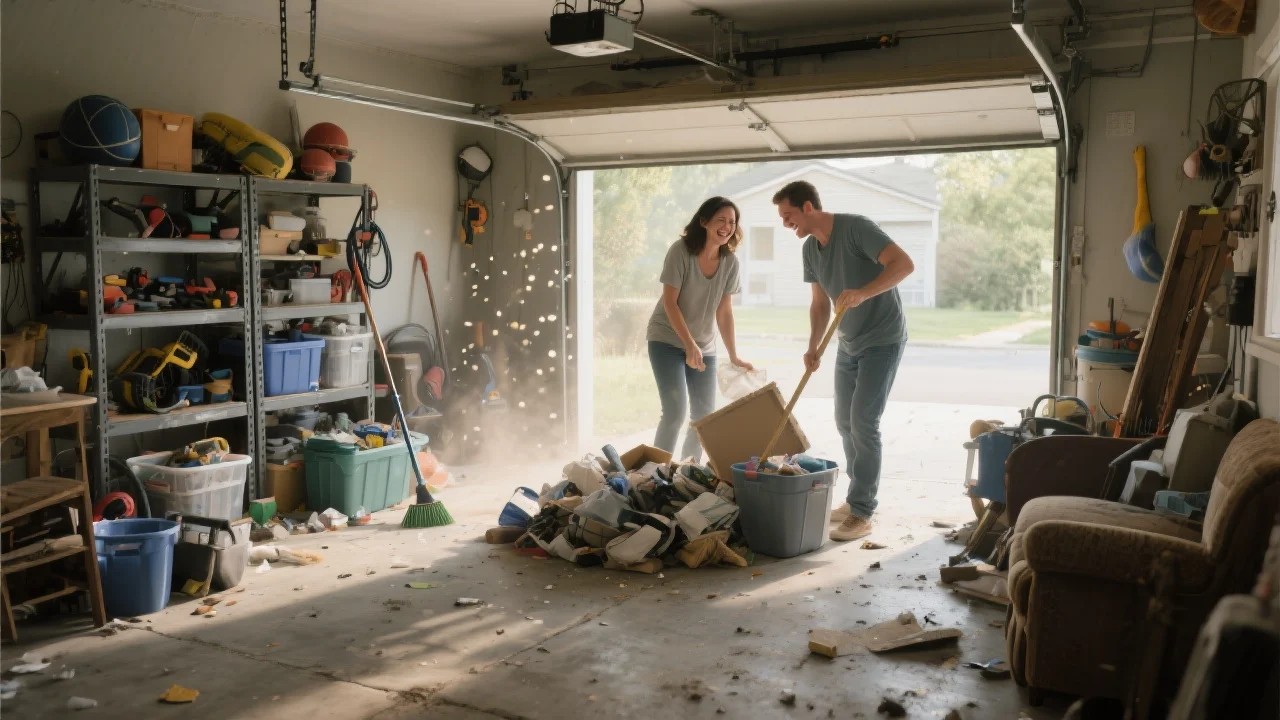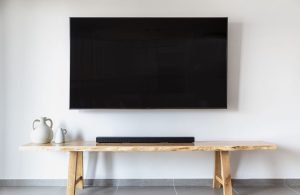Last Updated on October 30, 2025 by teamobn
Decluttering a hoarded home is a daunting task, both emotionally and physically. The American Psychiatric Association reports that hoarding disorder affects nearly 1 in every 40 people, making it a significant issue. The stress, anxiety, and depression associated with cluttered living environments further complicate the process. However, with a clear plan, patience, and a room-by-room approach, it’s possible to transform even the most cluttered spaces into comfortable, functional areas.
In this guide, we’ll walk you through practical strategies for decluttering a hoarded home one space at a time, drawing on proven techniques from professional organizers and real-life stories of people who have conquered overwhelming clutter.
Contents
Why a Room-by-Room Approach Works
Viewing a hoarded home as a single, massive project can be overwhelming. However, breaking it down into sections with a room-by-room approach reduces this feeling and builds momentum. Each completed room offers a sense of accomplishment, motivating you to continue. This method also allows for more thoughtful decision-making, giving you the mental space to address the emotional ties to each item without feeling rushed.
Step 1: Preparation Before You Start
Before you touch a single box or bag, set yourself up for success:
- Gather Supplies: Heavy-duty trash bags, recycling bins, boxes for donations, gloves, cleaning products, and a dust mask.
- Create Sorting Categories: Keep, donate, recycle, toss.
- Set Realistic Goals: By aiming for a few hours per session and celebrating small wins, you’re taking control of the decluttering process. This sense of control and the empowerment that comes with it can be a powerful motivator.
- Address Safety: Hoarded homes may have hidden hazards like mold, pests, or unstable stacks. Safety goggles and sturdy shoes are essential.
Room-by-Room Decluttering Plan
1. Outside the Front Door
Your home’s exterior sets the tone for what’s inside. Start by removing dead plants, broken furniture, and weather-damaged items. Sweep walkways and consider adding a simple welcome mat. A tidy entrance signals that order is returning inside.
Pro Tip: Keep only functional, weather-resistant items outside.
2. Entryway or Drop Zone
This is where clutter often begins to collect. Install hooks for coats and bags, and use trays or baskets for small items like keys and sunglasses. Limit what’s allowed in this space to essentials only.
Quick Win: Once this area is clear, it immediately feels like you’ve made progress.
3. Garage
Garages in hoarded homes often become storage overflow zones. Begin by breaking down empty boxes to free up space. Discard broken or damaged items that are unlikely to be repaired — group similar items together (tools, seasonal decor, sports equipment) to make sorting easier.
Mindset Tip: If something has been sitting unused for years, its value is likely sentimental, not practical. Letting go of these items can bring a sense of relief and freedom, making your space feel lighter and more at ease.
4. Kitchen
The kitchen is often the heart of the home, but can quickly become a clutter hotspot. Start by designating “zones” for tasks like food prep, cooking, and paperwork. Clear counters and keep only daily-use appliances accessible.
- Toss expired food.
- Donate duplicate utensils or cookware.
- Group pantry items by category to avoid overbuying.
Why It Matters: A functional kitchen encourages healthy cooking and social connection.
5. Bathroom
Bathrooms can accumulate expired products and unused toiletries. Use a Lazy Susan or tiered organizer under the sink to store items you use regularly. Dispose of expired medications and beauty products.
Small Change, Big Impact: A clean bathroom can be one of the quickest wins in a decluttering project.
6. Living Room
The living room often contains sentimental items, magazines, outdated electronics, and overfilled shelves. Start with surfaces — coffee tables, shelves, and end tables — before moving to storage units.
- Keep only decor that brings you joy.
- Digitize old DVDs, CDs, or photos to save space.
- Remove excess furniture that limits movement.
Emotional Tip: Photograph sentimental items before parting with them.
7. Home Office
Paper clutter is a common issue. If you dislike filing, create a labeled “pile system” instead. Store papers in categories and set a weekly reminder to sort them.
- Shred outdated financial documents.
- Switch to digital statements where possible.
- Keep only necessary office supplies.
Why It Matters: A clear workspace boosts focus and productivity.
8. Bedrooms
Bedrooms in hoarded homes can become storage areas instead of restful retreats. Empty bedside drawers and sort items into categories. Donate clothes that no longer fit or suit your lifestyle. Keep surfaces clear to promote relaxation.
Mindset Tip: Your bedroom should be a sanctuary, not a storage unit.
9. Closets
Closets are notorious hiding spots for clutter. Work one section at a time:
- Remove everything.
- Sort into keep, donate, toss.
- Return only what you wear regularly.
Consider the one-year rule: If you haven’t worn it in 12 months, let it go.
10. Storage Rooms or Attics
These areas often contain items kept for “just in case.” Evaluate each item honestly. If you didn’t know it was there, you likely don’t need it.
Pro Tip: Limit keepsakes to one labeled bin per person in the household.
Addressing the Emotional Side of Hoarding
Professional organizers and psychologists agree: without addressing the mental and emotional roots of hoarding, clutter often returns. Some common causes include:
- Fear of scarcity or future need.
- Sentimental attachment.
- Guilt about waste.
- Identity tied to possessions.
Strategies for Emotional Progress:
- Work with a therapist experienced in hoarding behavior.
- Use gradual exposure by starting with less emotionally charged items.
- Celebrate small victories.
Maintaining Your Progress
Decluttering a hoarded home is only half the battle—maintenance is key:
- Adopt a One-In-One-Out Rule: If you bring in a new item, remove an old one.
- Set Regular Declutter Days: Once a week, scan your home for items to donate or discard.
- Shop Mindfully: Shift from a “want” mentality to a “need” mentality.
When to Call in Professional Help
Some hoarding situations require more than a DIY approach. Professionals can provide:
- Physical labor for large cleanouts.
- Emotional support during decision-making.
- Specialized cleaning for biohazards.
For a comprehensive checklist and expert tips, visit Decluttering a Hoarded Home.
Final Thoughts
Decluttering a hoarded home is not just about creating more physical space — it’s about reclaiming comfort, safety, and peace of mind. By breaking the process down room by room, addressing the emotional side of hoarding, and setting systems for maintenance, you can transform even the most cluttered home into a place that feels fresh, functional, and welcoming.






